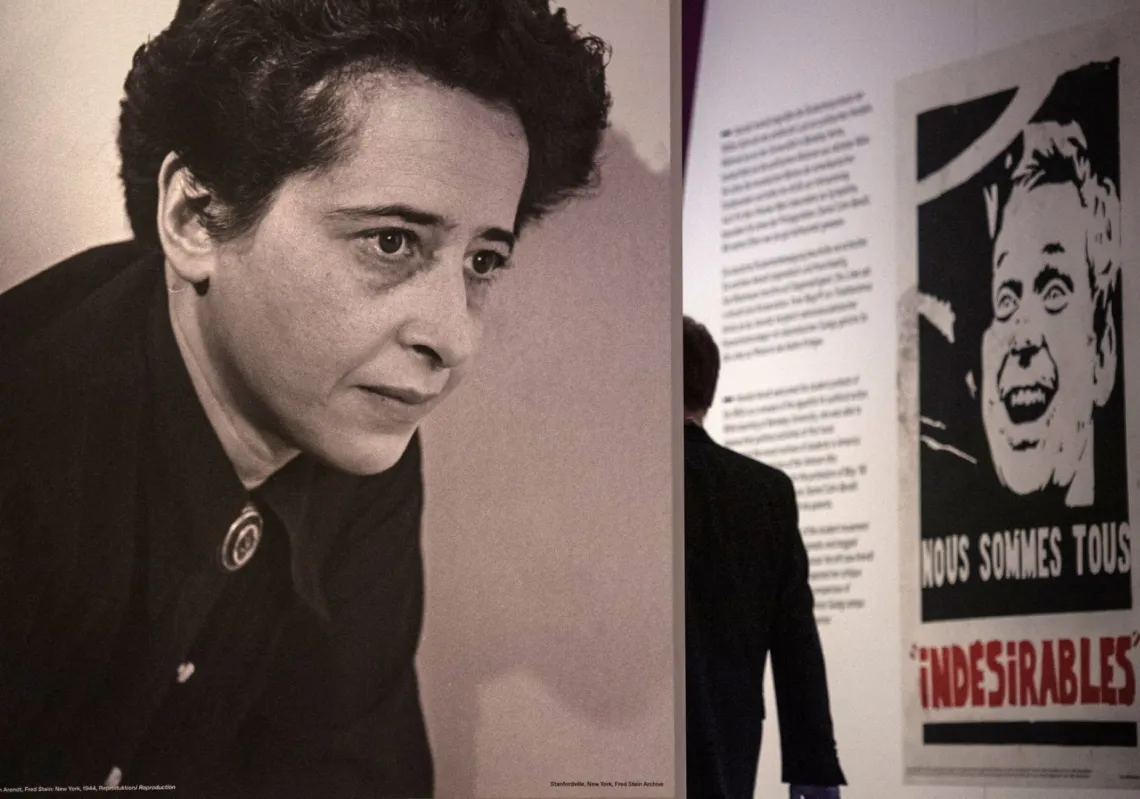 George Bahgory at the opening of his exhibition. ATI METWALY.[/caption]Standing at the crossroads between expressionism, surrealism and cubism, Bahgory considers himself a disciple of Pablo Picasso. The grotesque laughter characterizing a substantial portion of his canvases not only reflects the artist’s appealing sense of humor, but is also a shield of sanity protecting him from the ugliness of the present day.
George Bahgory at the opening of his exhibition. ATI METWALY.[/caption]Standing at the crossroads between expressionism, surrealism and cubism, Bahgory considers himself a disciple of Pablo Picasso. The grotesque laughter characterizing a substantial portion of his canvases not only reflects the artist’s appealing sense of humor, but is also a shield of sanity protecting him from the ugliness of the present day.
Born in 1932, Georges Bahgory is one of the most renowned Egyptian contemporary artists. Widely known for the sharp political caricatures he publishes in the Egyptian press, Bahgory has mastered a multitude of mediums, including painting, drawing, pencil sketching, printing and sculpture. He has exhibited his works extensively in Egypt and internationally. Bahgory has been based in Paris since the 1970s, although he spends several months a year in Egypt, from where he draws most of his inspiration.
Through his art, he is a vivid follower of and commentator on Egyptian realities, people and customs, as well as on Egypt’s political and social transformations. Bahgory on Revolution, held in January 2012 at the Al-Masar Gallery in Cairo, was one of Bahgory’s artistic commentaries on the Egyptian Revolution and its participants. The exhibition included samples from his large body of work depicting Umm Kalthoum, the iconic Egyptian singer who is known as Kawkab Al-Sharq (Star of the East) across the whole Arab world. The same collection was previously exhibited in Dubai.
Today, Georges Bahgory seems happy as he proudly enters the Mashrabia Gallery, symbolically holding Umm Kalthoum's hand both as a personal artistic realization and a lost dream. This intriguing collection does not hide any bitter undertones.
"Artists are inspired by beauty," the veteran artist told The Majalla. Alas, he finds it in Egypt's past, which was marked by the many of greats: alongside Umm Kalthoum stood the singers Mohamed Abdulwahab and Abdulhalim Hafiz, writers Tawfiq Al-Hakim and Naguib Mahfouz, and actors Roshdi Abaza and Soad Hosni, among other prominent names.
Umm Kalthoum's haunting voice surfaces in the vibrant colors on Bahgory's canvases. To the artist, she is still very much alive, as if filling the air and the artist's nostalgic memories. As one of Bahgory’s main inspirations, we see how Umm Kalthoum embodies much more than a great voice and an unprecedented stardom.
"All Egyptian artists were inspired by Umm Kalthom, as she nurtured many creative minds. The best poets wrote lyrics for her; painters and musicians gathered around her artistic power. Artists were creating because she was living and singing while all Egyptians embraced her magnificence. Umm Kalthoum made everyone happy," Bahgory explains, looking back at the 1950s and 1960s, Egypt's long-past years of artistic glory.
[caption id="attachment_55240895" align="alignright" width="215"]
 Watercolors on paper. GEORGE BAHGORY [/caption]
Watercolors on paper. GEORGE BAHGORY [/caption]
Haunted by her power, Bahgory reveals that it took him a few decades to capture the spirit of Umm Kalthoum and to paint the 'perfect portrait' of her. According to the artist, Egypt's artistic decline began in the mid-1970s and has continued to fall drastically. The pain of this lost era surfaced poignantly for him once again a few months after Egypt's January 2011 revolution, when the changes became even more radical—or, as Bahgory puts it, "When the revolution of the youth [was] stolen from them."
While he places blame on the "Muslim Brotherhood, who uses religion in order to build their power," Bahgory is saddened by women covering their beauty, hair and even faces. But he is equally terrified by all the other veils which are slowly casting a heavy shadow over the few remaining splendors of the country. Desperately waiting for an aesthetic relief that he cannot find in Egypt's daily life nor on Cairo's streets, Bahgory goes back to his personalized dialogue with Umm Kalthoum as he contemplates an Egypt that used to exist.
He recalls process of the canvases' creation: "I kept listening to her and watching her for hours, time and again. I would press the pause button to capture an image that shows a specific posture, an essence of her character," Bahgory explains, adding that this procedure generated elaborated oils on canvas immersed in bright colors. Some works, however, were triggered by an outburst of a sudden energy—as a reaction to the singer's voice or specific gesture on stage—and gave birth to brisk outlines and thawing shades covering watercolors on paper.
The artist's fine use of form allowed him to reconnect with the singer. He places her alone, or accompanied by a group of musicians. Central on the canvases, Umm Kalthoum's spirit comes across through her facial expressions, smiles and frowns. In some of the works—Baghory's daring experiments—Umm Kalthoum is given some grotesque qualities, like a multiplicity of arms or a surreal posture. Those signature traits help Bahgory embrace the singer's captivating on-stage presence and artistic power. At times, he captures her in more domestic settings—on a couch, for instance—which in spite of their quotidian themes do not take away from the majestic aura that surrounds the Star of the East.
Umm Kalthoum takes the artist on a voyage of joy that is lost from today's reality. As much as this nostalgic journey through memories is an aesthetic therapy for Bahgory, for the viewers, it triggers aching comparisons between the present and the past.








